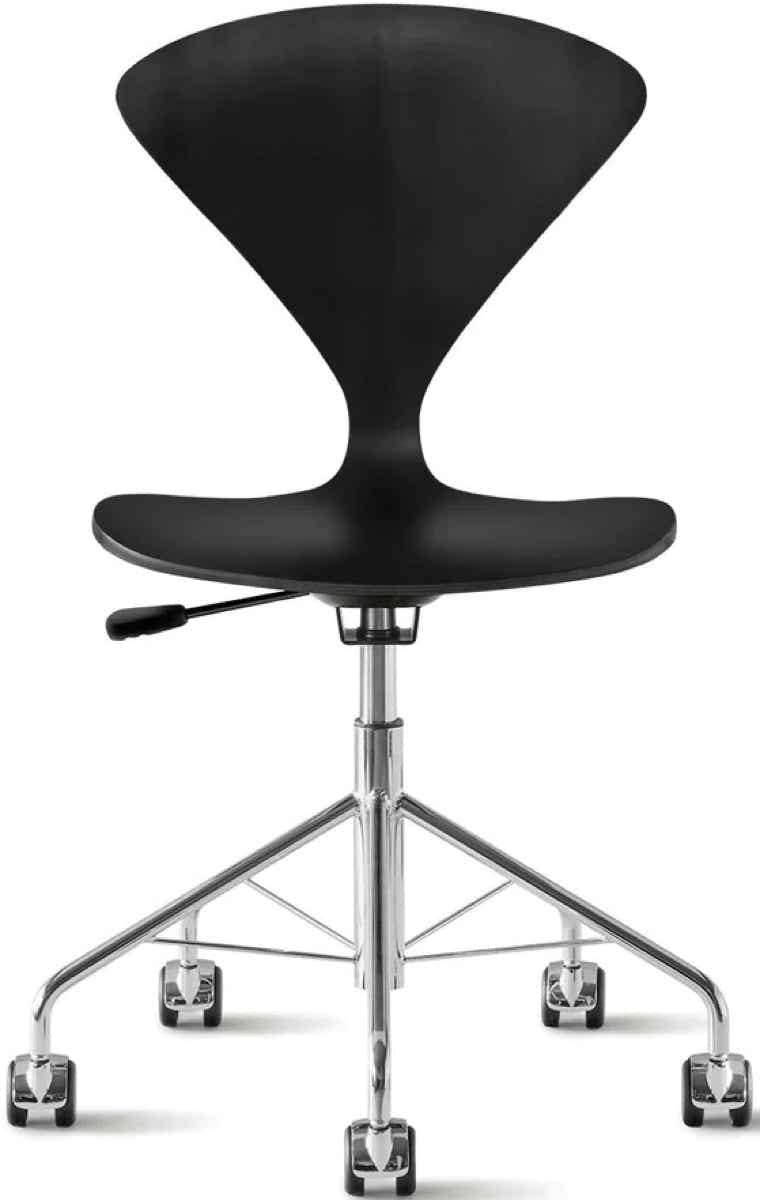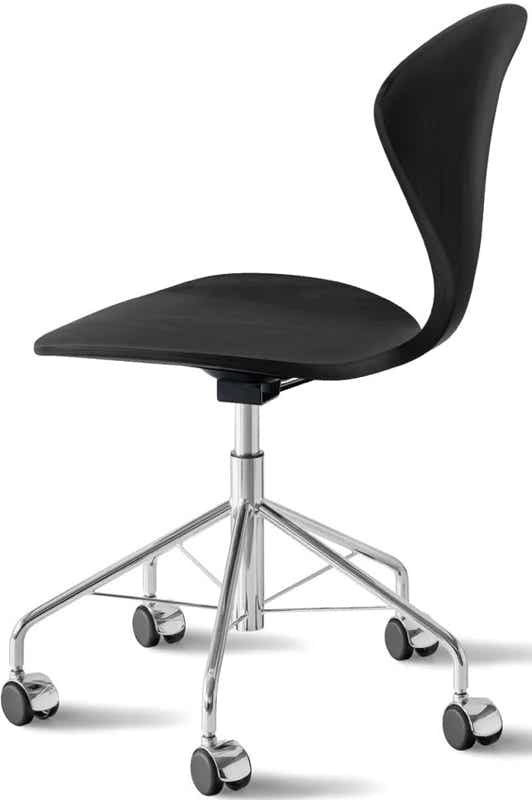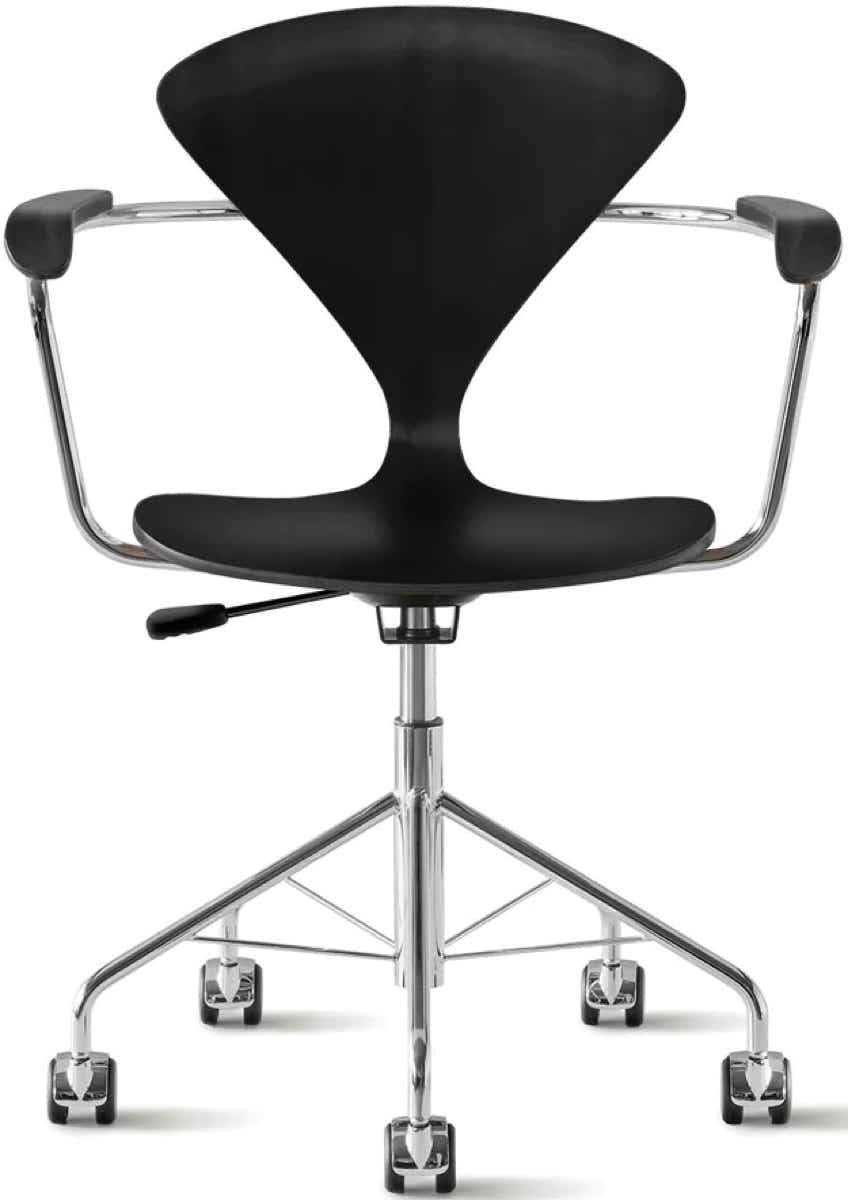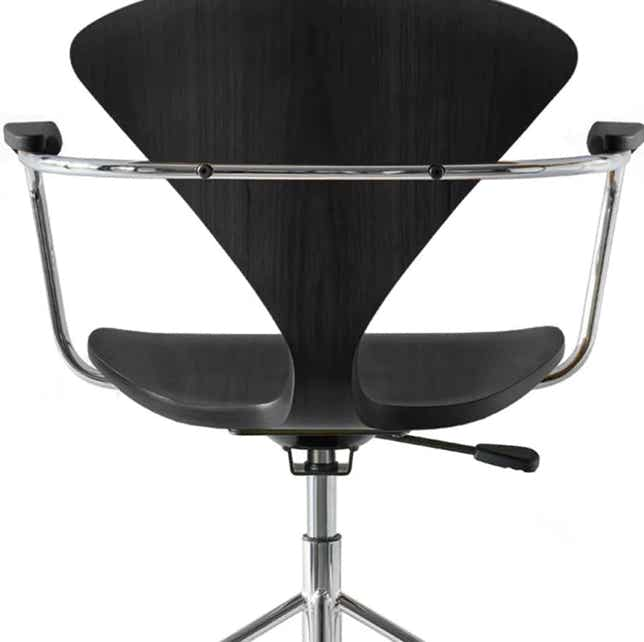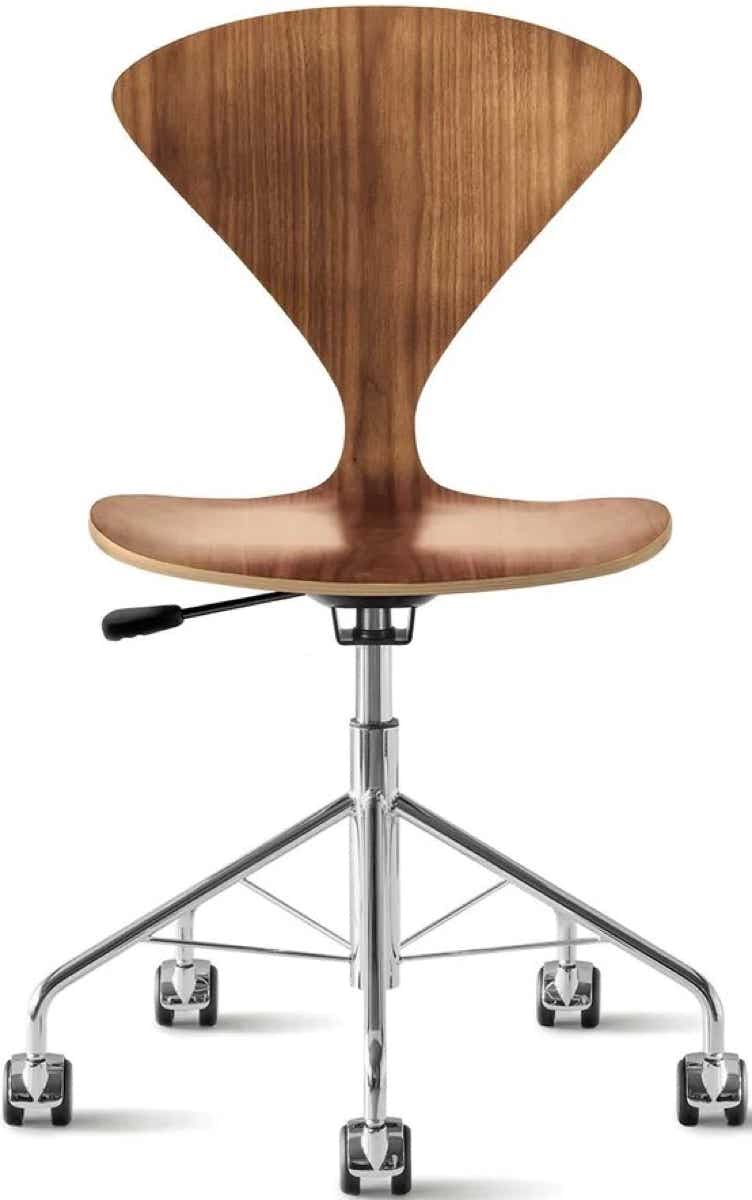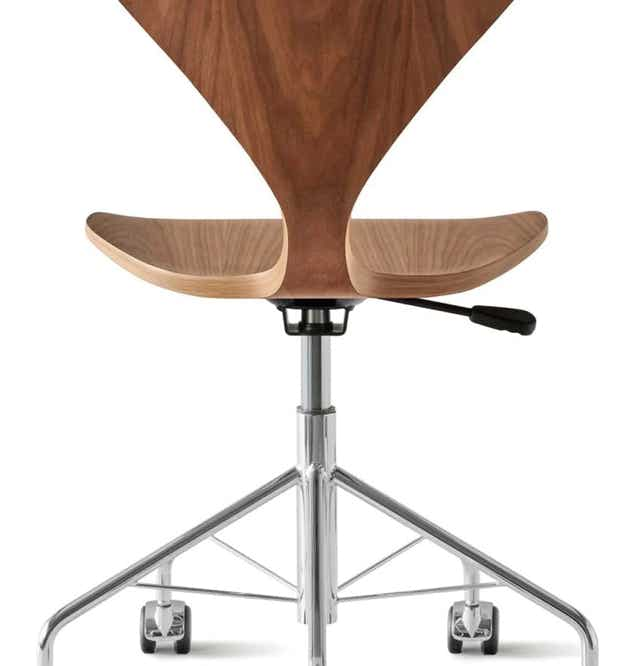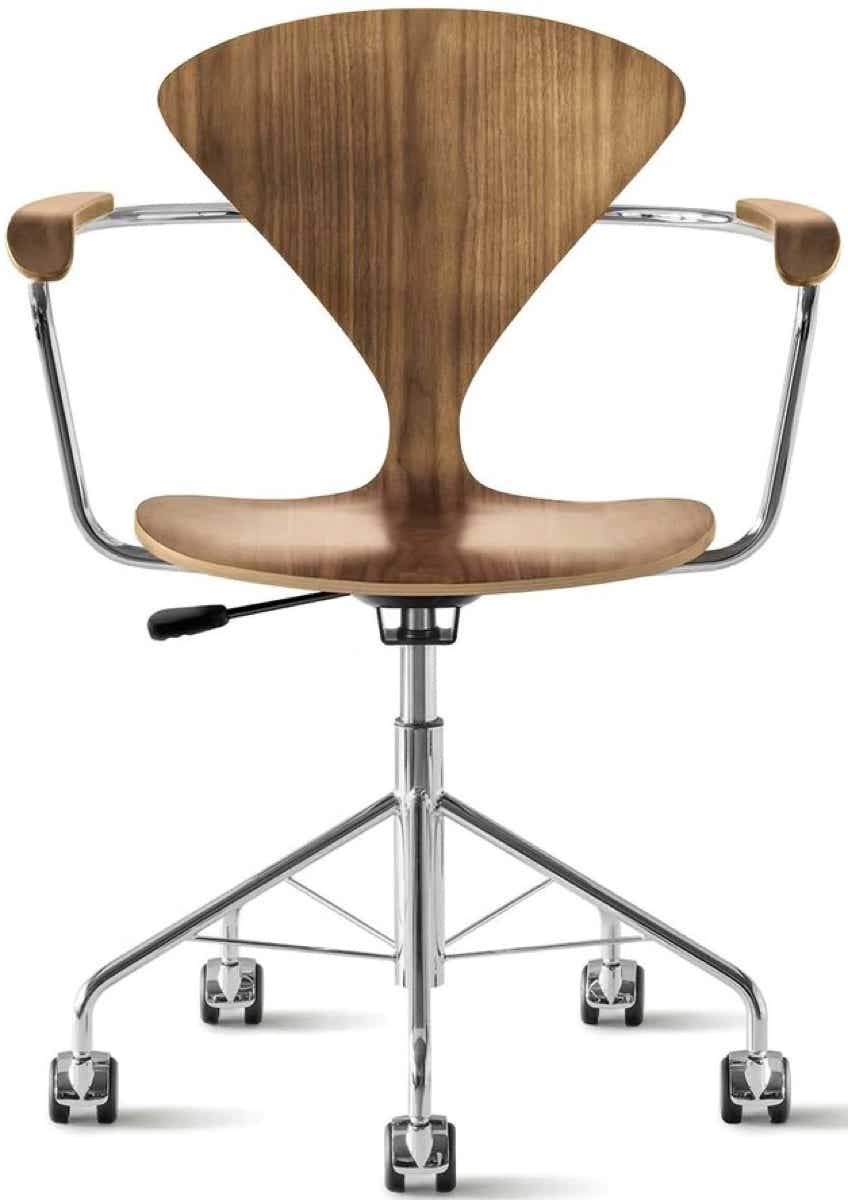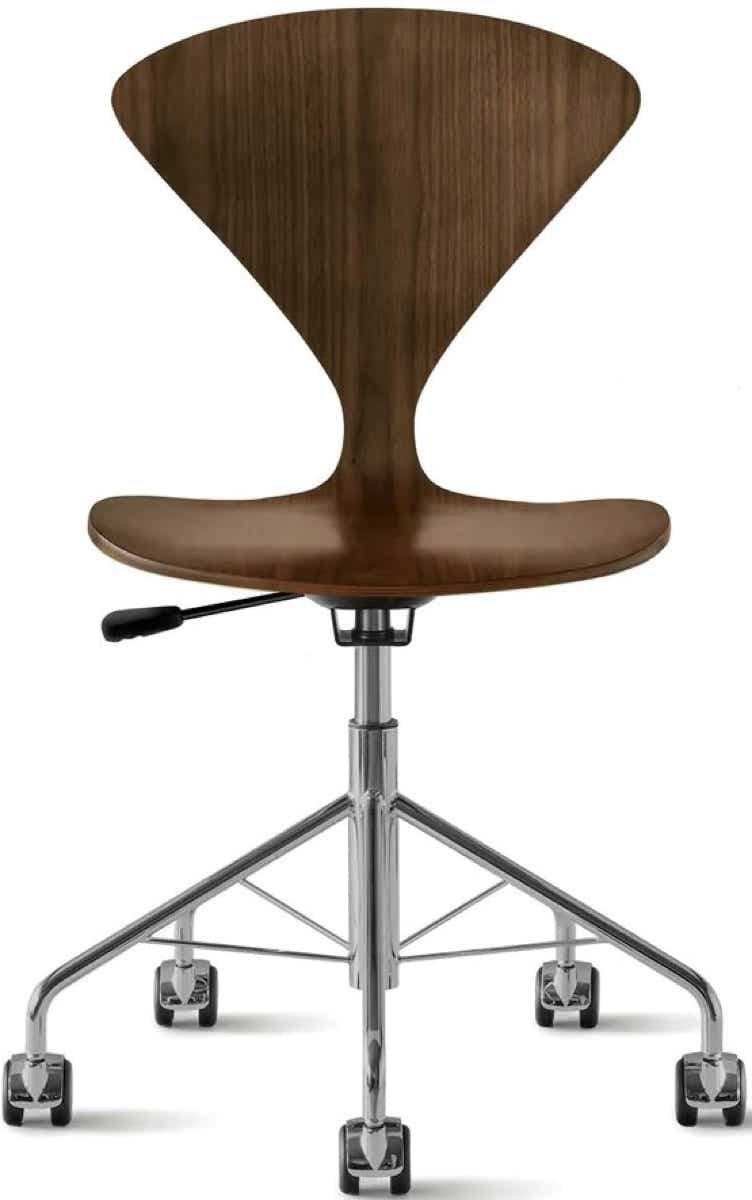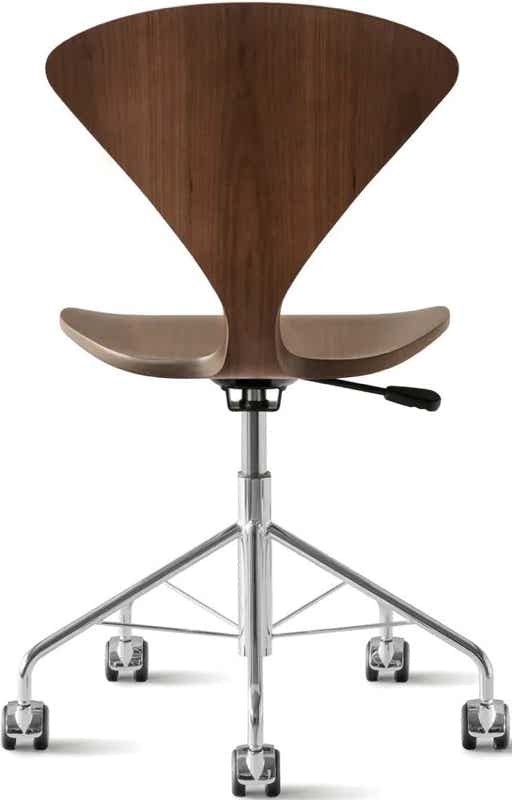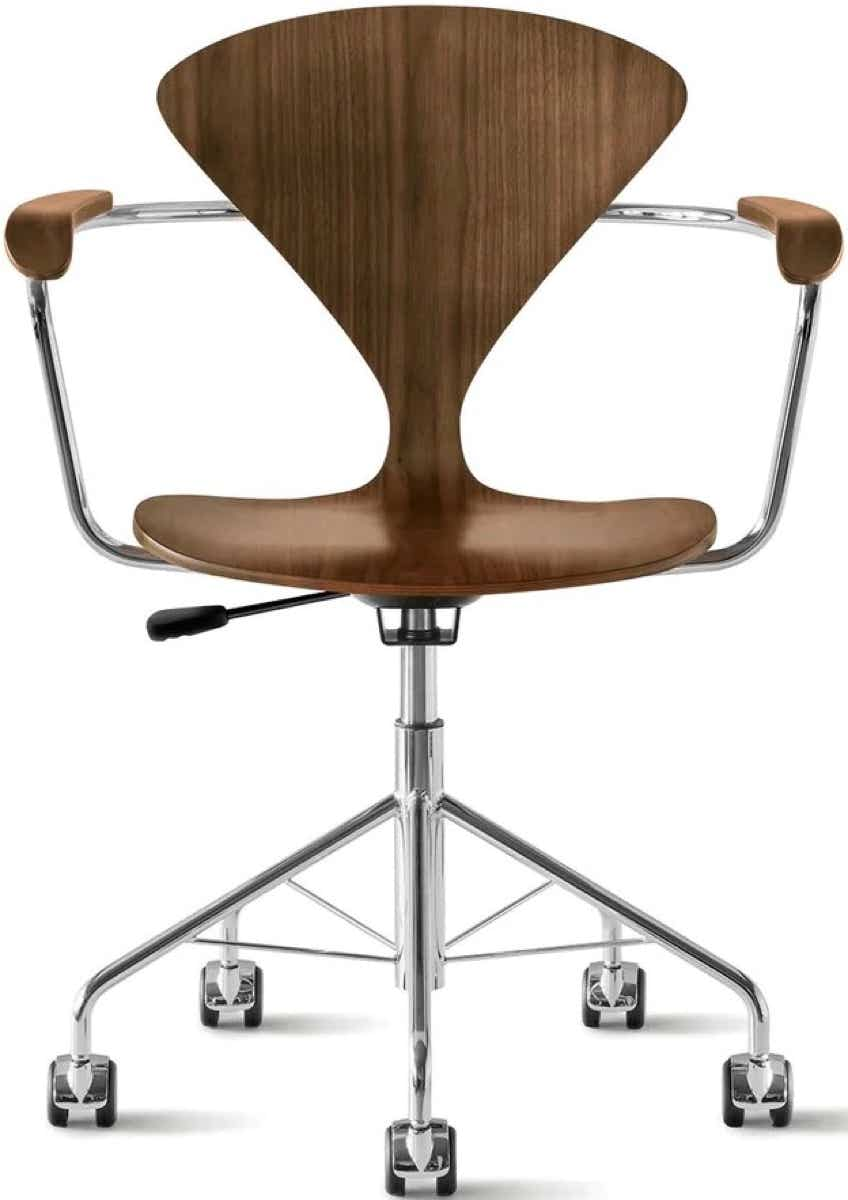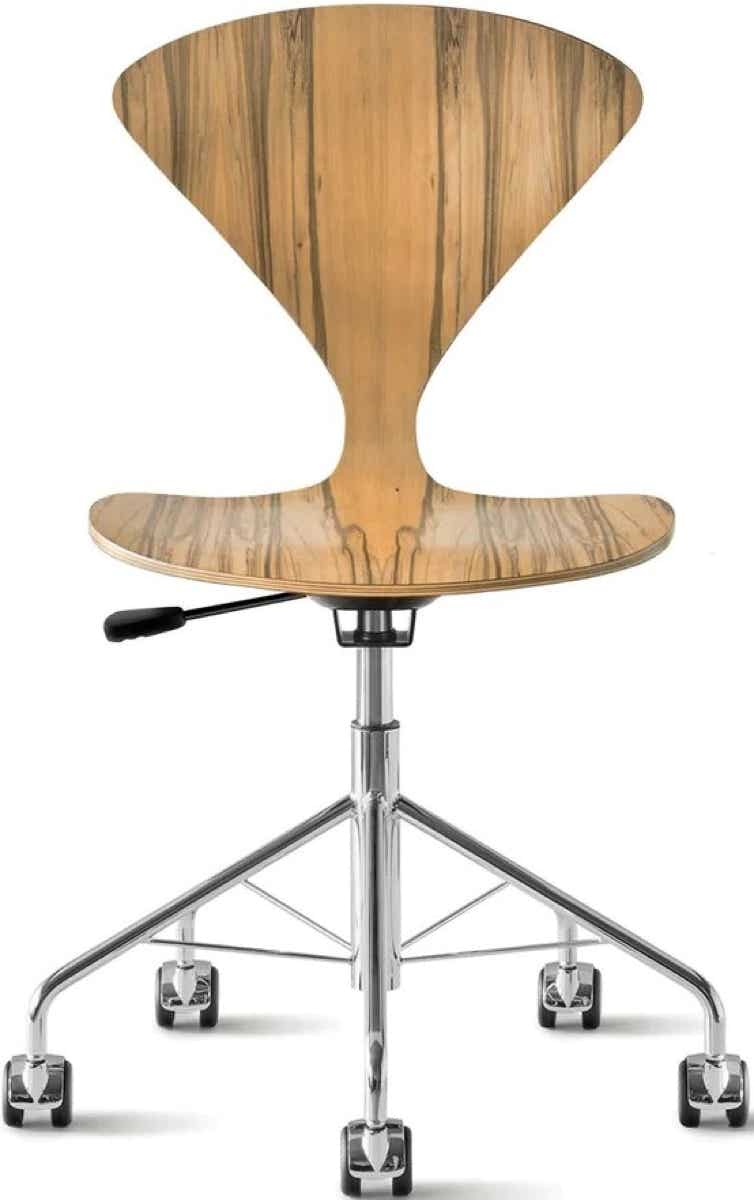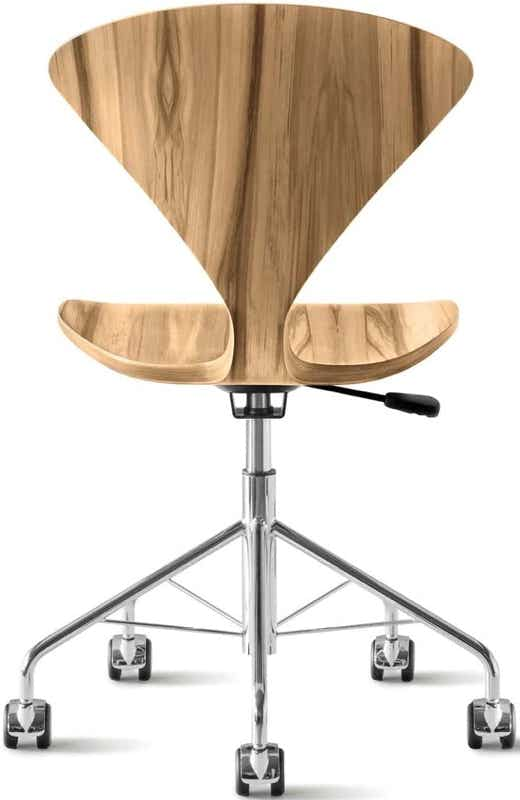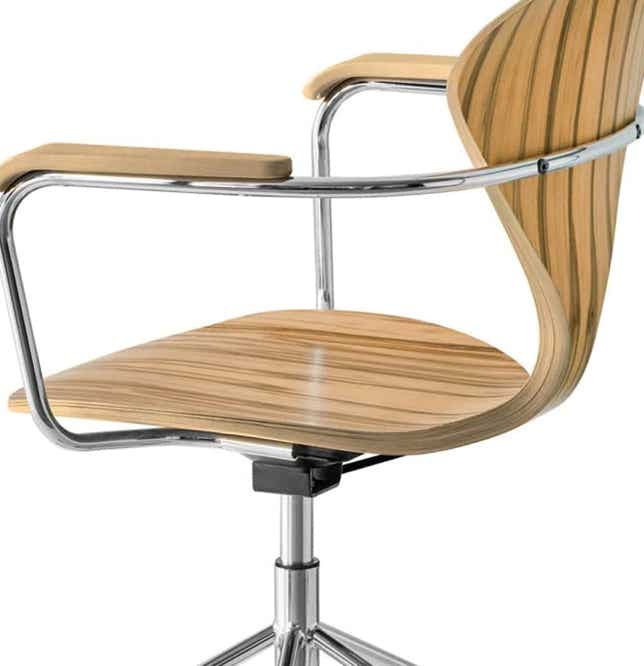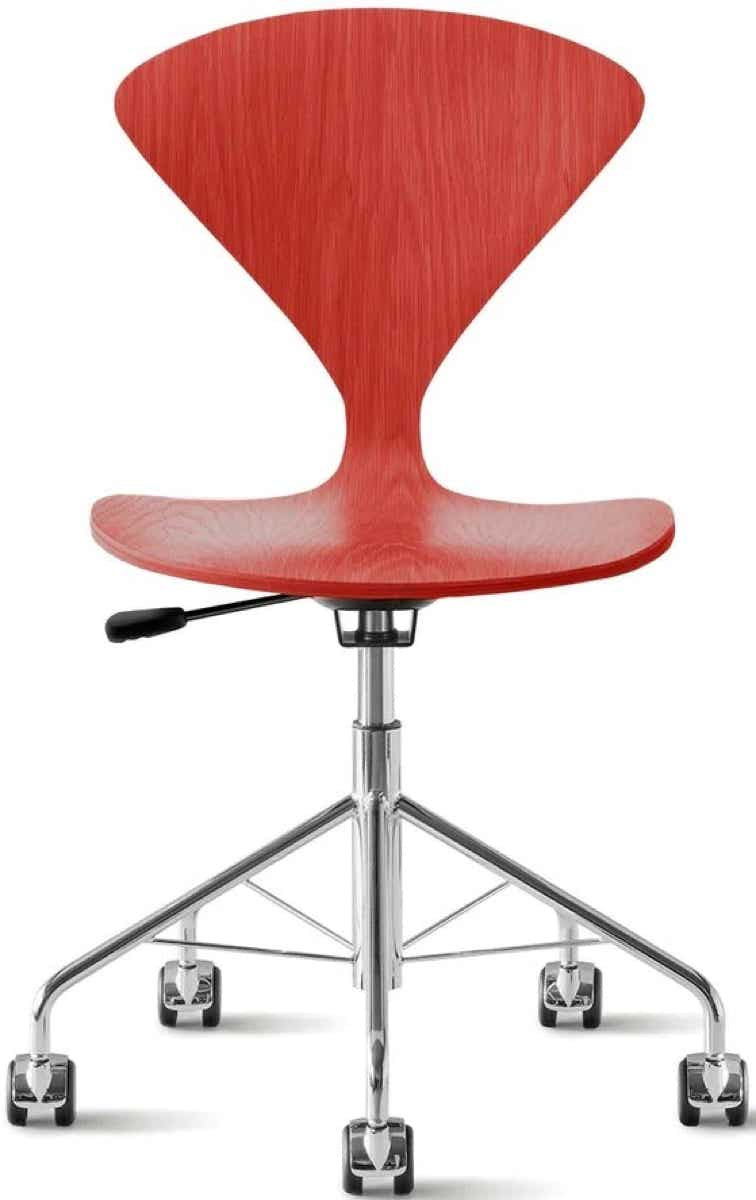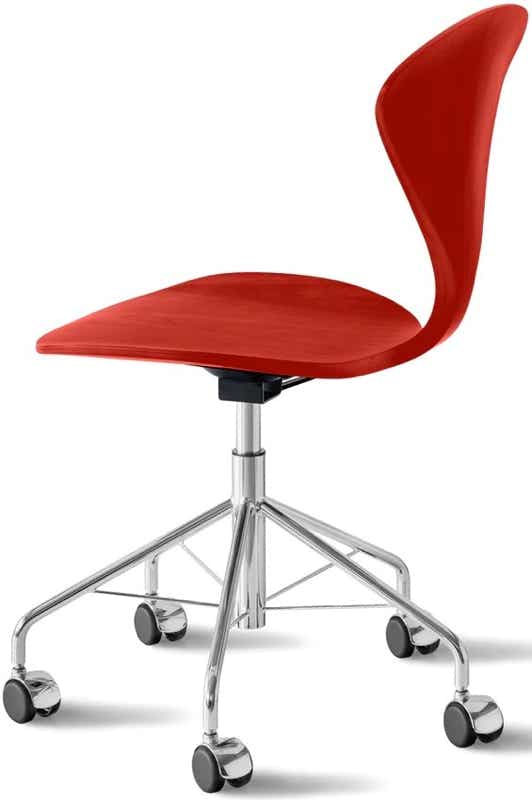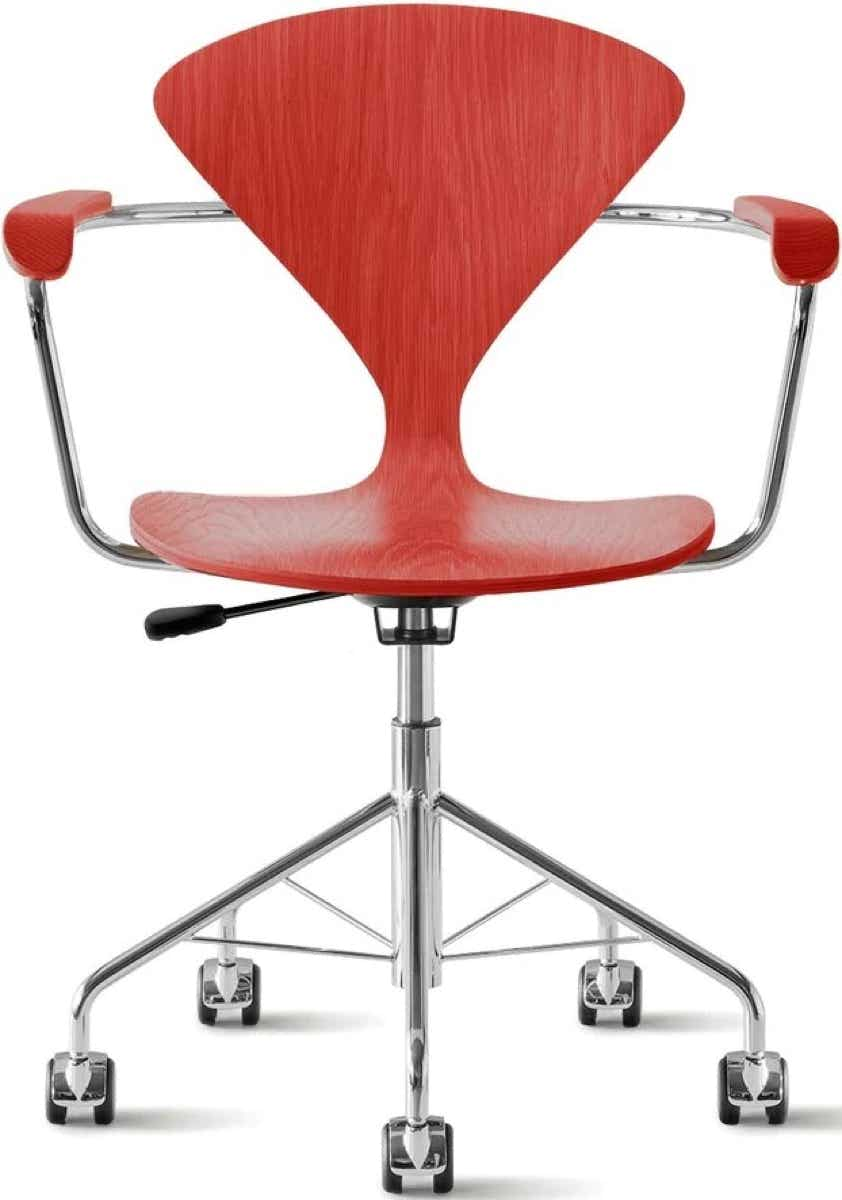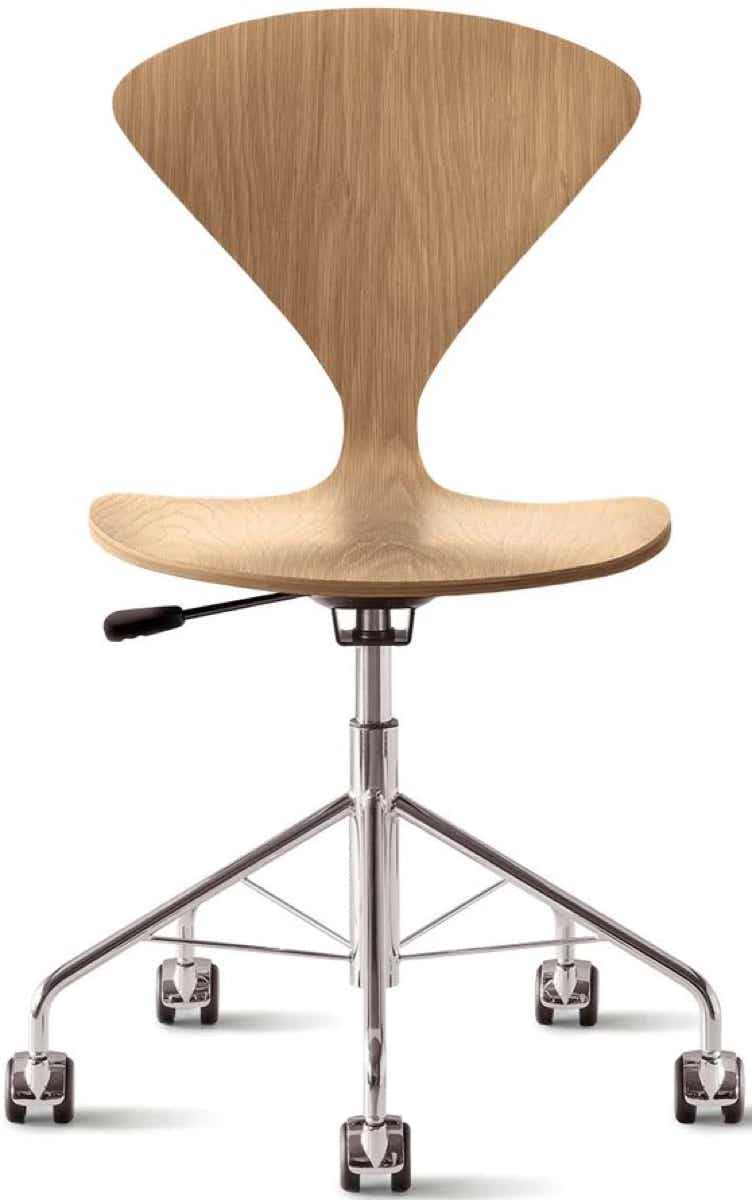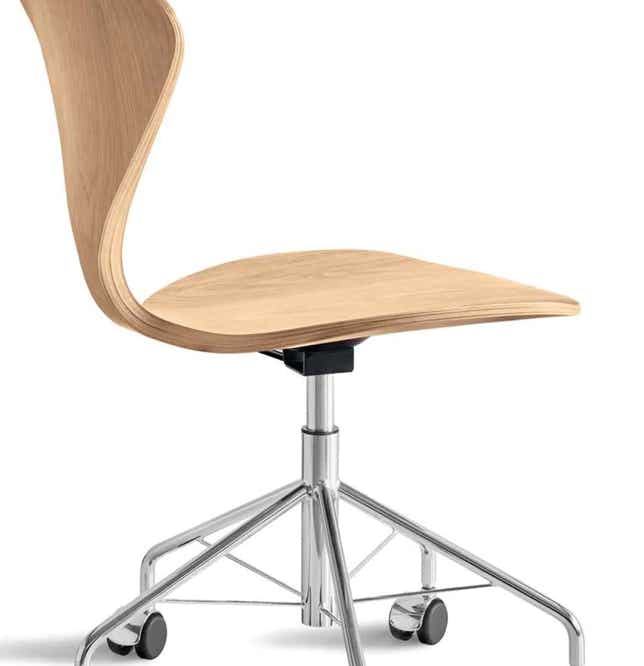
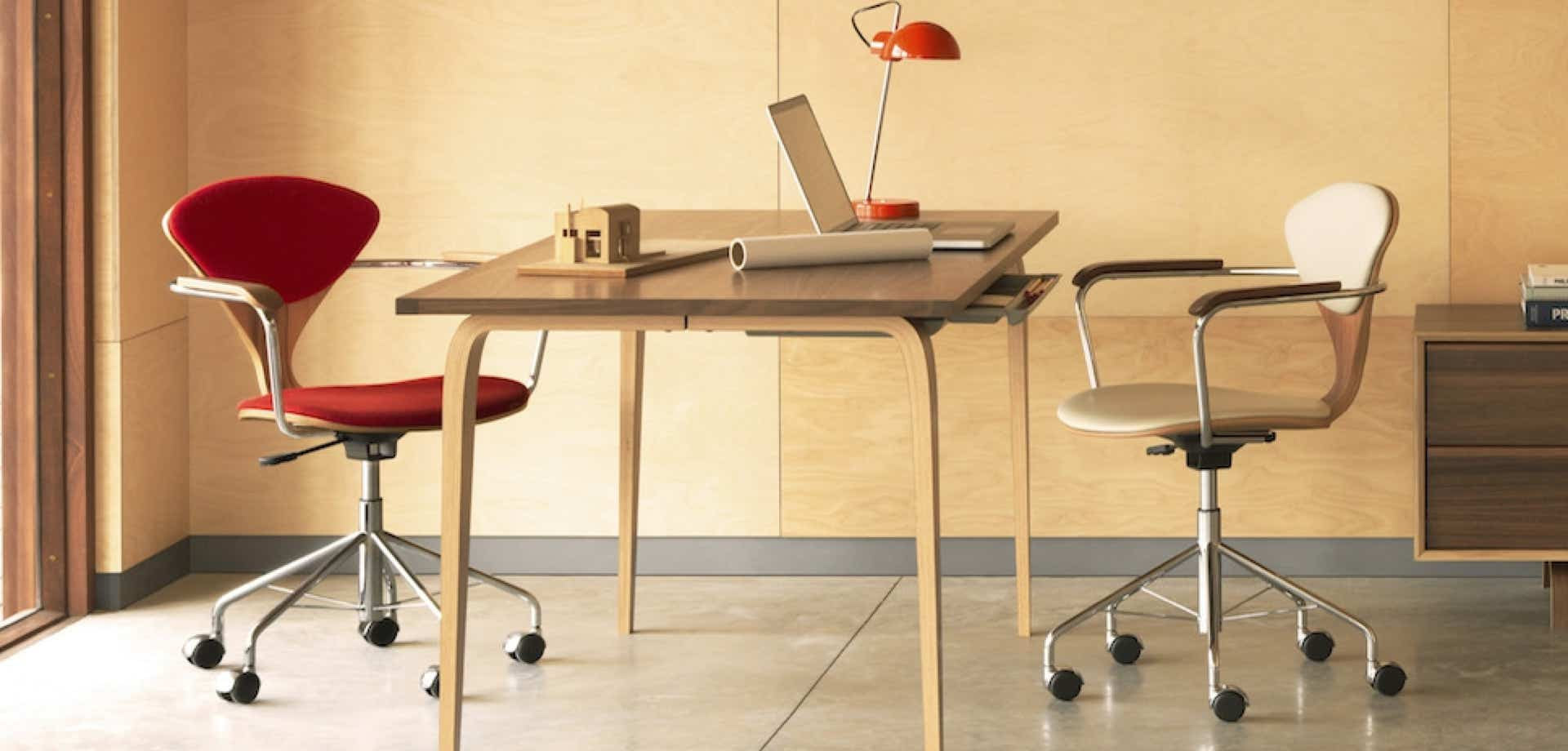
For the home or office, the swivel base Task Chair is available with or without upholstered seat pads. With a uniquely designed chrome metal base, the Cherner Task Chair's seat height is adjustable from 42 to 49.5 cm. The Task Chair utilizes the same molded plywood shell as Cherner Arm and Side Chairs.
Dimensions W47 x D53 x H80.5-91 – seat height 42-49.5 cm
Cherner task chair without armrest – Classic Ebony
Cherner task chair with armrests – Classic Ebony
Cherner task chair without armrest – Natural Walnut
Cherner task chair with armrests – Natural Walnut
Cherner task chair without armrest – Classic Walnut
Cherner task chair with armrests – Classic Walnut
Cherner task chair without armrest – Natural Red Gum
Cherner task chair with armrests – Natural Red Gum
Cherner task chair without armrest – Orange
Cherner task chair with armrests – Orange
Cherner task chair without armrest – White oak
Norman Cherner

Norman Cherner was born in 1920 in the United States. He spent his formative years at the Fine Arts Department of Columbia University in New York. There, he learns in particular architecture according to the classical canons of the time, where noble materials must be put forward and brought to light by the architect. Above all, at the time, architecture as taught in universities was an art in the same way as painting or sculpture, and not an industry. Then, Norman Cherner taught in the same department, and worked at the Museum of Modern Art in New York (MoMA) between 1947 and 1949. There, he discovered the Bauhaus movement. Appearing in Germany, this movement considers architecture as a means of making the life of citizens easier and less expensive. The dictatorship of beauty for beauty's sake is over. For this, the Bauhaus explores the possibilities of new materials and new techniques brought about by chemical and physical progress. Norman Cherner totally recognizes himself in this manifesto. His career then took a new turn.
Influenced by the Bauhaus, Norman Cherner made it his mission to build a fully furnished prefabricated house at a low cost. For this, he uses the least noble materials, but the most practical: plastic and especially plywood which he will make a specialty of. In 1957, Norman Cherner built a prefabricated house for the United States Department of Housing. The work is exhibited in Vienna, Austria. Then, the house is dismantled, and crosses the Atlantic by boat to be reassembled in Connecticut where it serves as Norman Cherner's home and work studio. The manufacture of these prefabricated houses does not meet with commercial success. However, the designer gains international recognition. He did not give up his idea, however, and began to write a series of books to explain how to make his own furniture and house.



